In 1998, I released what has become an international best selling, systematic vocal training program titled Singing Success, which was revised and update in 2015 and is now known as Singing Success 360.
The majority of this program is a series of scales—each with a skilled singer demonstrating an example of correct technique—designed to unlock the voice, massively expanding range, tonal quality and diversity as well has helping singers hit elusive ‘high notes’ that they’ve always wanted to master.
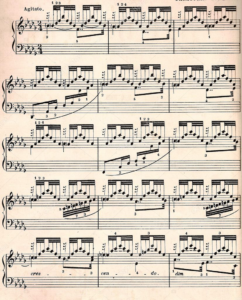
A musical scale, whether on instruments or vocal scales, is a sequential series of notes played or sung that ascend or descend in pitch and typically are set within the frequency of a certain key. Typically, pattern repeats every octave, unless you get creative…. that would a song! 😉
Fast-Track Your Success!!
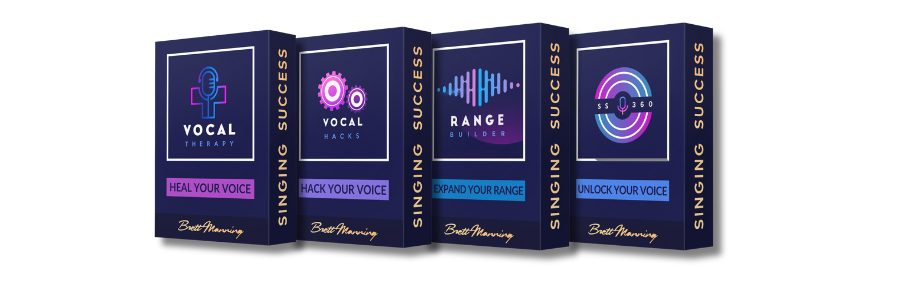
VIP Membership includes:
- Exclusive Facebook Group
- Interact with our vocal coaches–ask them YOUR question
- Live warmups
- Masterclasses and Q&As with Brett Manning and his guests
- SS360 QuickStart Program
- SS360 – The FULL Systematic Vocal Course
- Vocal Hacks
- Range Builder
- Mastering Mix
- Mastering Harmony
- Mastering Vibrato
- Vocal Therapy
- Plus…exclusive content only found here all along the way!
You can struggle on your own, or you can get direct access to the Nashville Coaches who have launched some of the biggest names in the music industry.
For those unfamiliar with scales, the most common sound we’ve all heard is in the sung 7 note Major scale sequence that goes:
Do, re, mi, fa, sol, la, ti, do.
In Nashville, we typically sing 1, 2, 3, 4, 5, 6, 7 and 1 again starts the next octave.
This is the from the Solfège syllables which are singular and distinct as to assign a sound to a degree of the scale you’re singing.
The Solfège system was made famous in the movie ‘The sound of Music’ in the Song titled ‘Do-Re-Mi’ which some call ‘Do a deer’ after the first line of the song. In the more complete form, hand signals are used along each pitch.
Why Are Singing Scales Important?
Musically speaking:
- Musical scales are crucial for musical development. They teach us to discern the orderly sense of music and to hear the changes of musical chords that often accompany scales.
- Scales are the tonal basis of all genres of music.
- Types of scales convey and stimulate distinctive emotions.
- A sudden chage in a scale can denote a key change in a song.
- Crucial for learning an an instrument. They help you with hand placement and in the case of wind instruments, accompanying air pressure.
- More effective for training to read music.
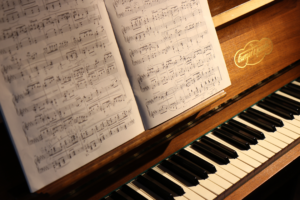
Vocally:
- Scales help many singers find tune their ears to their vocal cords so that we can sing a note correctly. In other words, they keep us from singing off key.
- Scales are an essential part of hearing intervals (spaces) between notes.
- Scales help are useful for vocal warm ups, because they are incrementally awakening the voice so that no panic sets in, making it easier to stretch, coordinate and increase in volume and diversity of tone quality.
- Majority of vocal exercises for increasing vocal range and over all vocal training requires us to sing scales.
- Scales are a huge part of good technique starting with (the registers) chest voice and connecting into head voice.
- Scales are used to find mixed voice, which is a blend of head and chest registers.
- Scales discipline the the singers breath control. Especially a 2 octave scale or longer.
- Scales teach us different rhythms.
- First time singing scales, you might sing a full octave higher.
- Scales will rapidly improve your singing!
- Basic scales give us a snapshot of your vocal range so you know what songs are currently within you ability.
- Advanced scales help coordinate your voice for the epic diva/divo song. Also, they encourage your ear to other genres and challenge you to get more out of your voice.
- The vocal muscles get are strengthened through singing exercises repeating and habitualizing wise vocal technique.
- All the greats can be found singing scales for their warm ups to discipline their vocals and to be reliable when attempting to sing higher pitches.
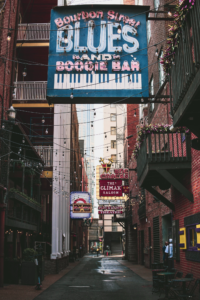
7 Essential Singing Scales To Know
Here’s just a few scales that are common to most types of warm ups.
Major Scales.
Most familiar scale. The basic tool used to keep singers in tune and stay on pitch. It’s also the easiest. There are 7 notes in a major or minor key. Then they repeat each following octave. Major scales and chords are considered happy and sweet. The major scale should always be the first thing every musician learns.
Minor Scales.
The Second scale is slightly more complex. It has the same number of notes as the major, but there are 3 different tonal combinations: Natural Minor Scale, Harmonic Minor Scale, and Melodic Minor Scale. A minor scale is characterized by a flattened third note, a flattened sixth and seventh note. Although the seventh scale degree may not be flatten in a harmonic minor scale. Minor scales are considered, dramatic, sad, romantic or melancholic.
Chromatic Scales.
They are deemed the most challenging scale to sing and are different than the other scales. Chromatic scales use 12 notes that are all a half step a part. This makes seems to have no pattern because a major and minor scales use sequences of half and whole steps to create musical soundscapes. Also, because the chromatic scales are a sequence of half steps, it feels like there’s no start and end to the note pattern. Particularly if there’s no chord played while singing the chromatic scale.
Whole-Tone Scales.
This scale is the opposite of the chromatic scale. This scale only has 6 notes, and each note is a whole step apart instead of a half step. It’s rarely heard in music but implies a series of augmented chords which is a stacking of whole tones. Trying to find the whole tone scale in a modern song would be a needle in a hay stack. They are usually very tense and unresolved. Look for whole tone scales in the music of Bach.
Pentatonic Scales.
This scale is the simplest and oldest of the scales. This scale consists of only 5 notes and can be played in the major or minor scale. In any major scale, you simply omit the 4th and 7th notes for a pentatonic. In minor, you omit the 2nd and 6th notes.
Also, f you play on only the black notes of the piano, you get only 5 notes per octave. As you change keys you can see these patterns and how they’re used frequently in Soul, Blues, Country, Jazz and Rock. My Singing Success course has tons of minor and major pentatonic scales.
The 5 note scales.
This is NOT to be confused with the Pentatonic scales. This is the first 5 notes of a major scale or a minor scale. It’s typically based on the triad which is the most basic chord we play. On the Piano, this would be like a C major chord [C-E-G] and the 5 notes scale would ascend: C, D, E, F, G and back down.
The Rossini Scale.
Also, known as the octave and a half scale, the Rossini can be thought of as an arpeggio or ‘broken chord’ that changes chords on the high note, so that the pattern of notes on the way up the scale is different from the pattern coming back down. This is THE most popular scale used in all my training courses with the exception of Vocal Hacks which uses unconventional tricks to rapidly coordinate the most stubborn areas of the voice.
*I have created various forms of these scales and arpeggios to keep singers for boredom or what I call ‘exercise fatigue’ where your voice becomes rigid and resistant from doing the same thing too many times. Learning scales can actually be a lot of fun!

The Best Ways To Practice Singing Scales
Major and minor scales are the most important to learn and implement in your routine. Most singers prefer to focus on scales at the beginning of a practice session.
scales with a coach
The huge advantage of singing scales with a coach is what I’ve popularized as diagnostic vocal training. This is done by locating strengths and weaknesses in the voice with a qualified vocal coach who can hear the needed exercises and prescribe TKO kinds of scales to warm up and coordinate your voice.
Tempo- the various speeds of scales can either increase or decrease ease in warm ups and also help a singer to easily let go using faster (but not too rapid) tempos during warmups. Also, tempo assists you in an incremental ability to coordinate and find intervals for upbeat songs.
Kind- The particular sound made, that is ‘consonant’ and ‘vocal’ patterns that encouraged coordination.
Order- Just like a personal weight trainer doesn’t make you sprint, drop into the splits or lift your maximum weight on the first exercise, neither should a vocal coach prescribe exercises that disobey the principles of warming up gradually. Re-shuffling the order of your vocal scales could produce a totally different result.
A qualified coach should be an expert at hearing your needs. All my certified coaches go through extended, rigorous testing to show their ability to unlock voices with TKO and immediately improve your singing, your vocal range and give you exciting, quality high notes!
pre-recorded vocal scales
Many of you reading this have already heard about my ground breaking program titled “Singing Success” and some of you own it.
The strength of this course is that every lesson has only a few objectives and a simple, yet challenging vocal warmup and work out. You feel your singing getting easier and more confident with each session!!!
The strength of this Singing Success is that it is systematic. Each vocal exercise comes with a demonstration that makes you feel like you’re with voice teacher. All the notes in every scale are designed with the aforementioned TKO in mind.
As you complete each session in either technique or style and your singing voice improves, you’ll see why so many singers worldwide have sent us testimonials saying this is the best course they’ve ever tried.
Many of the artists singing scales in this course were chosen because they’ve become an example of great technique and exciting singing.
The Most Important Singing Scales For Beginners
Learning scales should start first learning to sing an easy scale. The following sequence is prototypical in my studio…The five note scale, major scale and Rossini scales as earlier mentioned in my:
“7 Essential Singing Scales To Know” are the foundations of ease and accuracy for beginning singers.
Which Direction Should You Sing A Scale In?
Scales that start lower in the range and move upwards have the added benefit of being much more likely to start with a relaxed, neutral, or lowered larynx position which is used for decreasing external muscle tension.
Top-down scales have the advantage of coming from above the passaggio/bridge (break) and ideally higher than the singer can yell or strain. I use these scales to disengage muscles and reduce fear of heights 😉… but there’s a trick to ‘finding’ these notes. This is an advanced mode of exercise.
Advanced scales
Though I don’t typically reserve complex scales for advanced singers, it’s important that you are confident in the beginning stages of practicing scales and arpeggios.
Arpeggios
This is basically a broken chord. A chord is any 2 or more notes. but most commonly we think of a chord as being made up of 3 different notes. An octave arpeggio repeats the bottom note, so you have 4 notes within the octave.
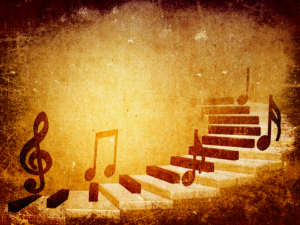
Practicing Scales And Arpeggios
In my studio and in my courses, we go between scales and arpeggios to adapt the mind, the ear and the vocal cords to hearing and feeling the whole tone, half tone and broader intervals of music.
Sing a natural minor scale
Can you do this a cappella yet? If not, remember that major scales and arpeggios are typically easier. This is a good test to see where you’re at. The natural minor scale ironically feels unnatural at first, until you hear it in context of a song.
Simple can be harder
Practice singing half steps and try to hear the next note in your mind before you sing it. It’s harder than you think, but super effective.
Diminished arpeggios
These are extremely advanced and have the greatest amount of tension and some see these as the most emotionally charged. My Singing Success 360 course has extended lessons in the style portion on diminish chord usage.
Conclusion
After a discovery and vocal unlocking warmup, you are read to sing. You can add words where simple sounds were made. Tongue twister phrases may take more patience. You can get tons of helpful tips on my YouTube channel as well.
To schedule a session with one of my talented coaches call or email us at






